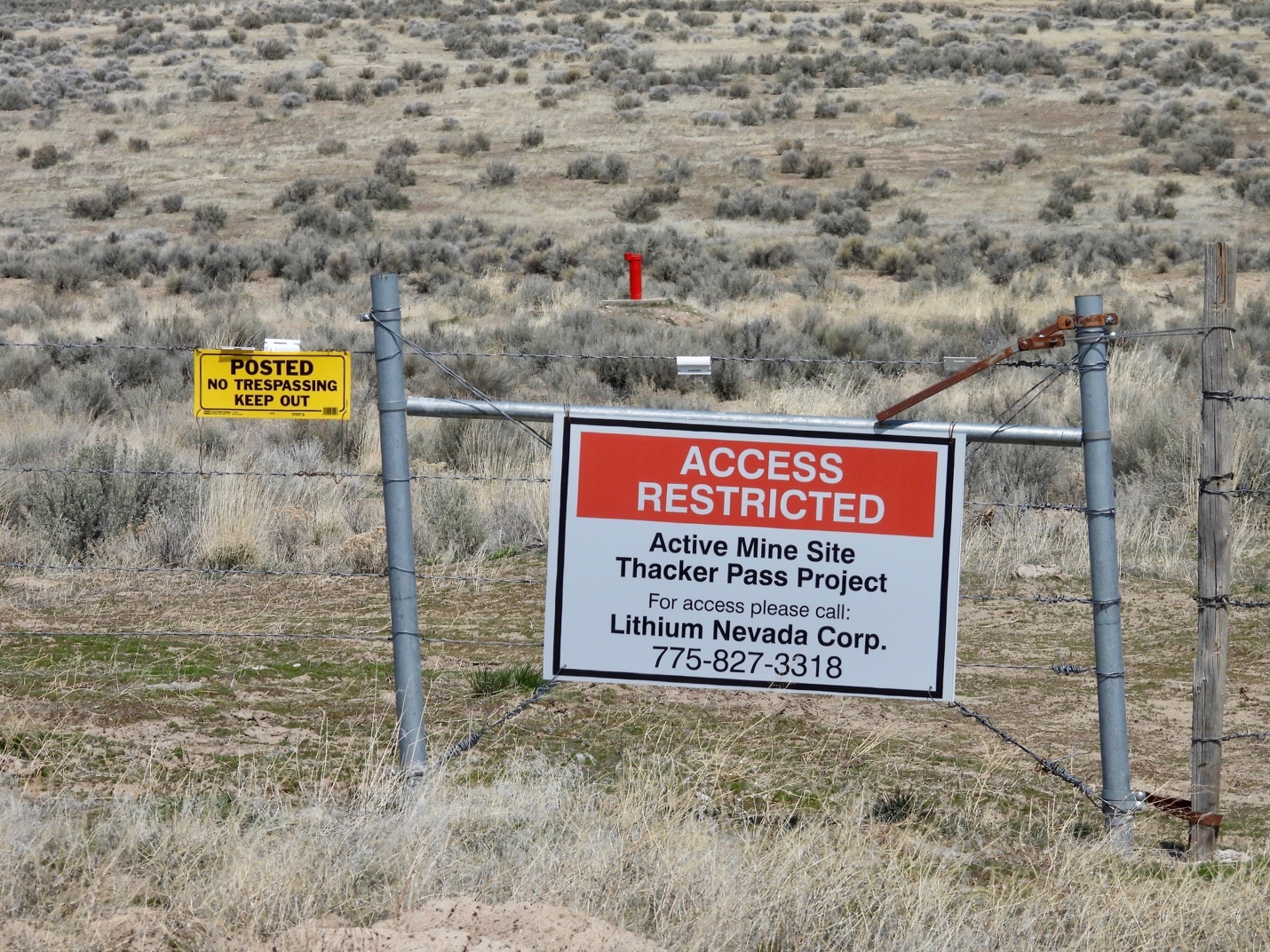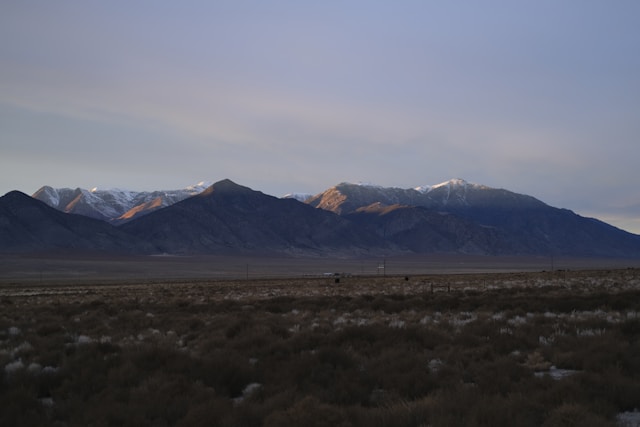
by DGR News Service | May 20, 2024 | ANALYSIS, The Problem: Civilization
By Katie Singer
A tech lover recently told me that he and several colleagues have realized:
1. The Earth does not have enough energy, minerals or water to support AI, e-vehicles, solar PVs, industrial wind facilities and batteries. Not at the scale we dream to fulfill. Not with eight billion humans.
2. Expanding the Internet and AI ravages the Earth and wastes young brains.
I consider this man’s honesty excellent news. If more people acknowledge that our electronic tools take from the Earth faster than it can replenish and waste faster than the Earth can absorb, maybe we could take a collective pause. We could question which manufactured goods are necessary and which ones are not. We could stop ravaging ecosystems, reduce production and consumption. We could have truth and reconciliation parties about our relationship with nature and ask each other for help in living within our bioregion’s ecological limits. We could cultivate humility.
Meanwhile, reports about the technosphere’s harms continue to flood my inbox. I do also get some Good News. Thanks for taking a look:
SOLAR PV PROBLEMS CONTINUE TO GLARE
In June, 2024, the Aratina Solar Project in Kern County CA will destroy 4,287 five-hundred-year-old Joshua trees to power 93,000 homes with “clean” (solar PV) energy.
According to a report by Sheffield Hallam University, “almost the entire global solar panel industry is implicated in the forced labor of Uyghurs and other Turkic and Muslim-majority peoples” who crush quartz rocks and work in coal-fueled furnaces to produce polysilicon for solar panels. Investors nor governments adequately address Uyghur forced labour risks in the renewable energy sector.
In Slavery Poisons Solar Industry’s Supply Chains, Miles Pollard reports that roughly 80% of solar components are manufactured in China using slave labor.
See European Parliament resolutions regarding forced labor in China to make solar PVs. See the 2021 U.S. Uyghur Forced Labor Prevention Act, which expanded the mandate that all U.S. companies importing silicon from Xinjiang confirm supply chains free of forced labor. In June 2021, a US Withhold Release Order prevented imports containing silicon from Hoshine Silicon Industry Co. Ltd and its subsidiaries from entering the U.S. until importing companies could prove they were not made with forced labor.
What to do? Solar corporations should obtain nearby communities’ free, prior and informed consent before mining or smelting. They can use standards like the Silicon Valley Toxics Coalition’s Solar Scorecard. The Solar Equipment Buyers’ Guide for Supply Chain Traceability explains how manufacturers can track finished solar modules’ material origins.
Before buying solar PVs, require the manufacturer to trace its supply chains.
Read Tuco’s Child, a Substack written by a retired chemist who worked in nanomaterials, polymer chemistry, semi-conductor process engineering and the mining industry and treated wastewater from semiconductor effluent. See his photo essay, Fossil Fuels Create 1 Trillion Computer Chips per Year. Computer chips and solar panel wafers are both made from silicon. Making silicon is like working in a volcano. Every 50,000 tons of silicon produces 500,000 tons of CO2. (Solar PVs also use copper, aluminum, boron, phosphorous, PFAs and much more.) Since recycling solar panels is not feasible or economical, expect an avalanche of solar panels at the landfill near you (another fab photo essay from Tuco’s Child).
WIND PROBLEMS DO NOT BLOW AWAY
Tuco’s Child also reports that wind turbine blade waste will exceed 43 million tons/year by 2050.
Major offshore wind projects in New York have been canceled.
U.S. wind generation declined in 2023 for the first time since the 1990s despite the addition of 6.2 gigawatts (GW) of new wind capacity in 2023. Power Plant Operations Report shows that U.S. wind generation in 2023 totaled 425,235 gigawatt hours (GWh), 2.1% less than in 2022. For a list of wind and solar facilities rejected by NIMBYs, see Robert Bryce’s Renewable Rejection Database. See also Bryce’s “Wind/Solar/Al-Energy Subsidies to Cost Federal Taxpayers $425 Billion Between Now and 2033.”
UTILITIES
A 2022 California energy bill has households paying a fixed monthly charge in exchange for lower rates for each kilowatt hour used. Opponents call the legislation a financial gift to investor-owned utilities. Californians who use little electricity pay more, while people who use lots of electricity save money. The policy signals “that conservation doesn’t count,” said Environmental Working Group’s Ken Cook. The new law’s inspiration came from a 2021 paper written by UC/Berkeley’s Energy Institute (partly funded by utilities). The paper detailed how costs for building “renewable” energy plants, burying power lines to reduce wildfire risks, and compensating fire victims increased electric rates—and discouraged Californians from buying EVs and electric appliances.
For a deeper dive, please read my Substack, “Discovering Power’s Traps: a primer for electricity users.”
Isaac Orr and Mitch Rolling (Energy Bad Boys), “Green-PlatingTM the Grid: How Utilities Exploit the ‘Energy Transition’ to Rake in Record Profits.”
AI
Ed Ballard, “Air Conditioning and AI are Demanding More of the World’s Power—Renewables Can’t Keep Up: Renewables can’t keep up with growth, which means more coal and more emissions.”
Amy Luers, et al., “Will AI accelerate or delay the race to net-zero emissions?As AI transforms the global economy, researchers need to explore scenarios to assess how it can help, rather than harm, the climate.” Nature, April 2024. This article says that AI’s energy costs are a small percentage of global energy costs—but doesn’t count the energy (or mining, water, or indigenous community impacts) involved in manufacturing devices and operating AI’s infrastructure. The push is for standards—a long slow, industry-run process—not actions. Power grid outages are considered ‘local’ problems…without recognizing data centers’ global impacts.
“Indigenous peoples rush to stop ‘false climate solutions’ ahead of next international climate meeting: COP29 could make carbon markets permanent. Indigenous leaders are calling for a moratorium before it’s too late.” Maria Parazo Rose, April 22, 2024.
Matteo Wong, “The AI Revolution is Crushing Thousands of Languages: English is the internet’s primary tongue—which may have unexpected consequences as generative AI becomes central to daily life,” The Atlantic, April, 2024.
Karen Hao, “AI is Taking Water from the Desert: New data centers are springing up every week. Can the Earth sustain them?” The Atlantic, March 1, 2024.
Valovic, Tom, Big Tech Companies Are Becoming More Powerful Than Nation-States. Already richer than many countries, AI’s rise looks to increase big tech companies’ influence.
EVs
How G.M. Tricked Millions of Drivers into Being Spied On (Including Me)
by Kashmir Hill, The NY Times, April 23, 2024. When this privacy reporter bought a Chevrolet Bolt, two risk-profiling companies got detailed data about her driving. (Note: new, gas-powered vehicles also provide detailed data to profilers.)
Bruno Venditti, “Visualized: How much do (replacement) EV batteries cost?” October 15, 2023.
Purdue University, the Indiana Dept. of Transportation and Cummins Inc. will build the U.S.’s first electric charging highway. Transmitter coils installed under pavement in dedicated lanes will send power to receiver coils attached to vehicles’ undersides. What if people with medical implants (deep brain stimulators, insulin pumps, cochlear implants, pacemakers) experience electronic interference?
MINING
People of Red Mountain: Life Over Lithium (an excellent, short film about mining Thacker Pass for EVs). See also my Substacks, “When Land I Love Holds Lithium: Max Wilbert on Thacker Pass” and “What choices do we have—when a corporation wants to do business?”
Eileen Crist on deep-sea mining with appropriately systemic responses.
“DRC Bleeds Conflict Minerals for Green Growth,” by Alexandria Shaner.
TECH & PLANETARY & PUBLIC HEALTH
Jessica Grose, “Every Tech Tool in the Classroom Should Be Ruthlessly evaluated,” NY Times, April 25, 2024. OpEd.
Patricia Burke, “The FCC is the Bully Boarding the School Bus: The Eyes are (Not) Having It.” Excessive screen-time leads to eye damage, yet the FCC funds installation of Wi-Fi on school buses, supposedly so that children can do homework while riding.
Environmental Health Trust (EHT) revealed that the Federal Communications Commission (FCC) hid test results showing that smartphones in close proximity to the body (i.e., in a pocket) exceed federal radiation exposure limits. EHT’s Theodora Scarato says: “Why did the FCC perform these tests and then decide to not release the results…while it was conducting a rule-making on this very subject? Why did the FCC refuse to release all the records on this issue? It is outrageous that the U.S. allows phones to be tested with whatever separation distance the companies want. Children and adults (keep) phones pressed to their bodies for hours every day. We need a strong oversight and compliance program…that reflects the way people use phones.”
Is Elon Musk’s Starlink Constellation Slowly Poisoning Earth? Starlink satellites could be eroding Earth’s magnetic field and slowly poisoning us all.
People undergoing therapeutic radiation should avoid exposure to wireless radiation prior to, during, and after treatment. In combination, it could seriously damage DNA. Medical/radiology practitioners need education about the risks of EMF-exposures combined with ionizing radiation.
GOOD NEWS…that might dovetail an era of humility
In Finland, a daycare replaced its sandy playground with grass, dwarf heather, planter boxes and blueberries. The children tended them. After one month, the children had healthier microbiomes and stronger immune systems than their counterparts in other urban daycares. Researchers conclude that loss of biodiversity in urban areas can contribute to poorer health outcomes; and easy environmental changes can radically improve children’s health.
In Denmark, engineers, architects and manufacturers have written the Reduction Roadmap. They advocate for living on less space. Re-using building materials, elements and structures. Selecting low-carbon, biogenic and regional building materials. Applying life cycle thinking to reduce carbon emissions and building materials’ environmental impacts. Using renewable energy for heating, cooling and electricity. (I question this one.) Collaborate.
In the UK, Daisy Greenwell reports that 75,000 parents have come together to give their kids a smartphone-free childhood, April 29, 2024.
In the Washington Post, Joanna Slater reports “How a Connecticut middle school won the battle against cellphones,” A study shows that banning smartphones decreases bullying among both genders. Girls’ GPA improves, and their likelihood of attending an academic high school increases. Consider banning smartphones at school a low-cost policy to improve student outcomes.
Katie Singer writes about the energy, extractions, toxic waste and greenhouse gases involved in manufacturing computers, telecom infrastructure, electric vehicles and other electronic technologies. Visit
OurWeb.tech and
ElectronicSilentSpring.com.
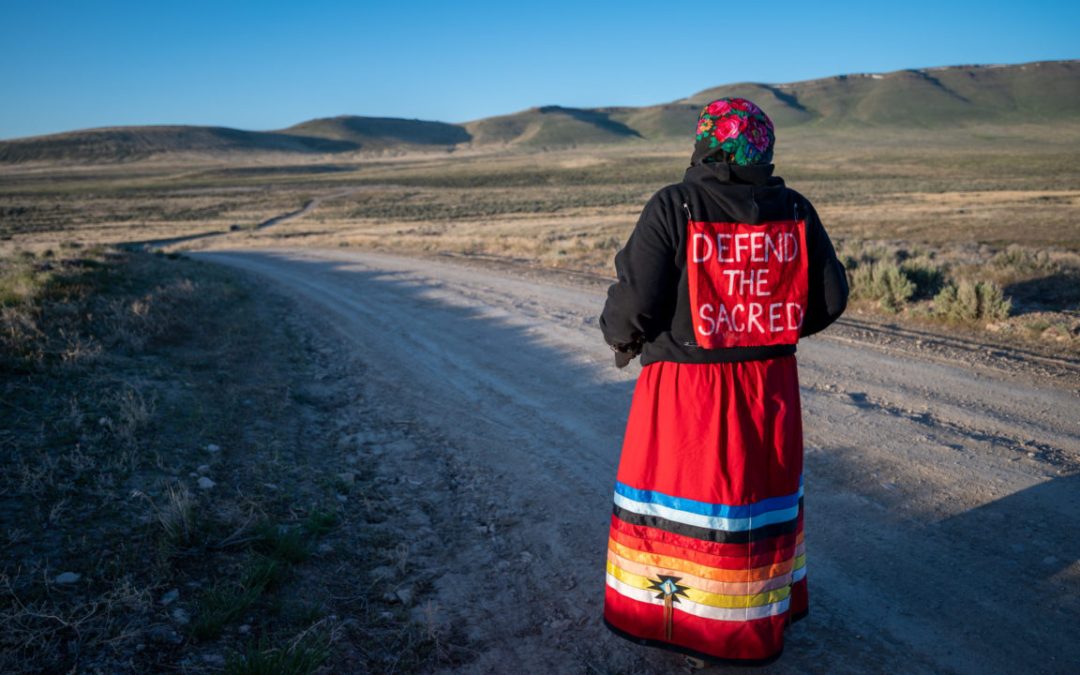
by DGR News Service | Nov 13, 2023 | ANALYSIS, Biodiversity & Habitat Destruction, Mining & Drilling
Editor’s note: The US military is the largest emitter of greenhouse gas pollution in the world. It is through the allocation of over half the federal government budget that this is made possible. So when companies say that the destruction of the environment must be done to save the planet, this fact is never mentioned. We are in fact in an existential situation and yet ending the war machine is never on the table. The evil empire will do what it has always done, which is to extract the wealth of the land to the determinant of those that live there. And this will not end until it collapses. If we are to have anything left before this happens we must fight to save it.
By Katie Fite/Counterpunch
Critical Minerals Propaganda
In early summer, Vale BLM (Bureau of Land Management) held a Resource Advisory Council meeting in McDermitt, ground zero for the critical minerals rush on public lands. Lithium driller Jindalee HiTech got to talk about the company’s horrifying new exploration drilling proposal for 267 more drill holes, wastewater sumps, and 30 miles of new “temporary” roads. The project would tear rip apart irreplaceable Sage-grouse Focal habitat, as a prelude to open pit strip mining for lower grade lithium. The BLM geologist showed a video, How Critical Minerals are Vital to the Climate Fight, that had appeared on ABC news.
One narrator, Reed Blakemore, was from the Atlantic Council think tank known for never seeing a War or US-backed coup it wouldn’t propagandize and cheerlead for. The other narrator works for an organization called SAFE. Their mission appears to be strident propaganda shaping policies, perceptions and practices and support for wresting control of critical minerals and energy, no matter how unsafe it makes the world or how much environmental damage is caused. The two harangue viewers about the need to get “shovels in the ground”. It includes a clip of Biden bragging about the Defense Production Act.
SAFE’s Website boasts about working with retired 4 star generals. A scroll through their Twitter account shows them pushing for streamlining environmental analysis–like the type of NEPA and tribal consultation short-cuts which contributed to the Thacker Pass (Peehee mu’huh) controversy that rages on. SAFE screeches about mineral laundering by China, adores high voltage transmission lines, and my favorite: “SAFE believes the Biden admin must take an aggressive approach that raises strong walls around foreign entities of concern while lowering drawbridges for our allies, like South Korea”. And hurl pots of burning oil down on the enemies of Fortress America from the castle keep?
This energy transition and critical minerals crusade on public lands is very much about retaining a corporate iron grip on energy, and increasingly seems to be about feeding the Military Industrial Complex. Watching the video, it belatedly dawned on me that critical minerals and green energy Neocons are driving much of the agenda. It’s certainly neocolonialist, but with the added twist of the Neocon global control freaks, and no dissent is allowed. We’ll grab what we want, anywhere, no matter if we break it all apart, no restraints tolerated, and we and our friends will make a fortune. The McDermitt caldera encapsulates the clash between supposed clean energy and the dirty reality for public land, water, communities, biodiversity, and a sane path to sustainability and energy change.
The EV “revolution” is being carried out with the same mindset, hubris, lies, greed, propaganda and war mongering that plunged us ever deeper into the fossil fuels mess and Forever Wars. The public is being propagandized by the Atlantic Council, SAFE, and others to blindly accept the sacrifice of any place, anywhere – under claims of saving us from climate change (as we continue to guzzle energy without limits). It’s also about domination and empire. Just like with oil, they won’t be content with a “domestic supply”, and instead seek to control all of it. Leadership of big green groups often appears captured by these critical minerals and energy Neocons – witness those dead serious Sierra Club outreach e-mails with a tangle of high voltage transmission lines portraying NEPA short-cuts as a good thing.
War Contractor Bechtel Selected to Build the Thacker Pass Mine, Mine Costs Double
Environews provides a whirlwind summary of some 2023 Thacker Pass events. Lithium Americas contracted with Bechtel Mining and Metals for engineering, procurement and execution of the mine. Bechtel is an industrial contractor and war profiteer who reaped massive government contracts during our Forever Wars in Iraq and Afghanistan. They’ve already signed a reconstruction agreement with Ukraine, a tad prematurely. They go way back, having built Hoover Dam and infrastructure for the Manhattan atomic bomb project at Hanford and elsewhere. Hanford plutonium was used in the nuclear bomb the US dropped on the people of Nagasaki Japan. To this day, Bechtel is involved in Forever Clean Up at nuclear facilities, including the most toxic place in America, and helping work on new nukes, keeping the gravy train going. The International Committee for Investigative Journalists summarized:
“Bechtel has been heavily involved in both commercial and military nuclear activities. These have included some of the most notable nuclear mishaps in U.S. history, from California’s San Onofre reactor installed backwards, to the botched clean up of Three Mile Island … Bechtel is finding ways to profit from the radioactive mess its projects have created.”
Regarding Bechtel’s endless Hanford work and profiteering Joshua Frank describes “they have a really bad track record and are well known for reaping the spoils of U.S. military ventures all over the globe. In October they had a test facility up and running that was going to do a run of vitrification for low-level radioactive waste. They basically had a ribbon cutting for this big machine and it ran for a week, then overheated, and they had to shut it down”.
Tribes consider this land to be a Traditional Cultural Property. Reno-Sparks Indian Colony and Summit Lake Tribe submitted a Traditional Cultural Property Eligibility Statement, (Peehee mu’huh: A Living Monument to Numu History and Culture District. September 12, 1865 Thacker Pass Massacre Site) to the BLM. It seeks official Interior Department recognition. Now it’s reported that BLM is sitting on the document, and never transmitted it to the National Park Service who oversees National Historic Register sites. Meanwhile, site integrity is being obliterated. Time after time – in local, national and international media – elders and tribal members have said that lithium mining desecration and destruction at Thacker Pass is like digging up Arlington Cemetery.
A recent deluge of news articles, many appeared planted, hyped a geological study that largely rehashes long known geological information. This helps fuel speculation and increase political pressure on agencies to rubberstamp projects. Following weeks of media gushing about the overblown study, the Nevada Current exposes what’s going on:
“The study was funded by Lithium Americas, and includes research from Lithium Americas employee and shareholder, Thomas Benson”. He was the lead author, but most media stories skipped right over that inconvenient fact.
“John Hadder, the director of the Great Basin Resource Watch … said while the study may be helpful in pitching mining in the area, his organization has heard claims of “largest lithium deposit” from places around the world.
“I am concerned that this report will be used to advance more lithium mining in the region, and pressure the frontline peoples to accept mine plans,” said Hadder. “Regardless of how much lithium may be extractable, the sloppy permitting process that led to the Thacker Pass mine must not be duplicated. Indigenous ancestral lands that have cultural values must be protected, and Indigenous communities should have the right to say no”.
The publicity also bumped up Lithium Americas stock that had sagged a bit. And it seems there was another purpose, too. Lithium Americas is angling for a $1 billion DOE (Department of Energy) loan handout, the largest amount ever. The same outlets that hyped the geological paper are all agog, casting this as “an historic 1 billion”. Reuters now reports “Lithium Americas had raised its budget for the first phase of the Thacker Pass project to $2.27 billion, from $1.06 billion, reflecting changes to its production plans”. The loan is claimed to be 50 to 75% of the mine cost. Is this price explosion due to estimates of production linked to the hyped study, or is there a huge mine cost over-run right out of the starting gate? Lithium Americas did choose a contractor with long experience profiting off the US’s trillion-dollar foreign misadventures and nuclear mess. If the lithium mine gets this obscene DOE handout, will dollars evaporate, like four Hanford whistleblowers exposed:
“It is stunning that, for a decade, Bechtel and AECOM chose to line their corporate pockets by diverting important taxpayer funds from this critically essential effort,” Assistant US Attorney Joseph Harrington said in a news release …The case started after four whistleblowers came forward in 2016, telling federal prosecutors about alleged time-card fraud in which the companies billed the U. S. Department of Energy for work that was never completed. The companies hired hundreds of electricians, millwrights, pipefitters … to build the plant … and then over-charged for the workers even when those workers had no duties to perform …”.
The Department of Justice Press release on the Hanford deception is here. The time-card fraud involved DOE funds. Now DOE appears on the verge of lavishing a billion-dollar loan on Lithium Americas who uses this same contractor.
GM Thacker Pass Lithium in Ultium Batteries, GM and War Machines
GM is now implicated as a major player in Caldera lithium mania. In January 2023, GM announced it would invest $650 million in Lithium Americas and use Thacker Pass lithium for its Ultium batteries:
“Lithium carbonate from Thacker Pass will be used in GM’s proprietary Ultium battery cells. … GM is launching a broad portfolio of trucks, SUVs, luxury vehicles and light commercial vehicles using the Ultium Platform, including the GMC HUMMER EV Pickup and SUV, GMC Sierra EV, Cadillac LYRIQ, Cadillac CELESTIQ, Chevrolet Silverado EV, Chevrolet Blazer EV, Chevrolet Equinox EV, BrightDrop Zevo 400 and BrightDrop Zevo 600”.
But these aren’t the only GM vehicles using Ultium batteries. Clean Technica headlined, “The US military is buying Ultium Battery Packs from GM Defense”. Get ready for the Green Wars, folks, including the Green Wars for Green Minerals. Are wild and sacred places of the McDermitt Caldera going to be destroyed not only for bloated GM pick-ups, street Hummers and virtue signaling about the climate crisis, but also for War machines too — gutting the West for critical minerals so we can waste untold amounts of energy and minerals on more Forever Wars?
GM Defense proclaims it’s driving the future of military mobility, with a five-passenger All-Electric Military Concept Vehicle, and working on energy storage for the tactical warfighter. Ultium batteries are also used in armored diplomatic vehicles that look like a sure hit with narco kingpins. Other monstrosities like this tactical truck, don’t yet appear to have EV batteries, but GM does promise they’re fuel efficient. How long until US troops de-stabilizing South American countries to gain control of their lithium, or maneuvering to grab foreign oil, are cruising around in EVs? At the end of a Reno KTVN Channel 2 video full of land destruction images and lithium company spin, the reporter says “lithium is a hot commodity”. The lithium company’s spokesman replies “it’s essential for national security”. Note that lithium is also used in designs of some nuclear reactors and in the nuclear weapons industry.
GM Greenwashing, Thacker Pass Lithium, Social Injustice
A Mighty Earth report, GM Wants ‘Everybody In’ on Greenwashing, tells how GM’s human rights policy conflicts with its investment in Thacker Pass, how they’re building hulks while smaller cars sold may largely be from China, a continuing dirty supply chain, a poor score in indigenous rights protection, and how often GM makes commitments but doesn’t follow through. In the report, the People of Red Mountain Atsa Koodakuh wyh Nuwu explain that “the entire landscape of the McDermitt caldera is sacred to Nevada, California and Oregon tribal nations”
The brutal 1865 US cavalry massacre of a Paiute camp at Thacker Pass was part of the memory-holed Snake War of Extermination. The massacre was not revealed by BLM in the mine EIS. During litigation, Tribes presented resounding evidence – US surveyor records, contemporaneous newspaper stories, and survivor Ox Sam’s own account from Big Bill Haywood’s Autobiography. The Biden-Haaland BLM brushed it all aside, to the anger and dismay of Tribes and many other people. The stalled Traditional Cultural Property document contains the records. Perhaps doling out a $1 billion loan for the destruction of an officially recognized massacre site might be a bridge too far, even for Jennifer Granholm’s DOE.
In spring 2023, the Ox Sam women’s protest camp was set up at Thacker Pass by a gaping water pipeline trench the company had ripped past sacred Sentinel Rock. The camp was raided after a protest action. Now Ox Sam descendants and white activists associated with the camp are being sued in a vile SLAPP suit: After getting hammered with lawsuits aimed at halting development of a lithium mine at Northern Nevada’s Thacker Pass, a Canadian-based mining company has turned the tables and is suing the mine’s protesters … the protesters and an attorney representing them counter that the lawsuit is similar to a strategic lawsuit against public participation (SLAPP), aimed at intimidating and silencing their free speech”.
How’s that for upholding ESG (Environmental, Social and Governance) principles, and the other social responsibility jargon Lithium Americas and the mob of Caldera miners use to lull investors?
Aurora Schemes of Yellowcake and Green Uranium
Aurora Energy Metals is trying to resurrect a uranium project long thought dead. Promotion videos show Greg Cochran, an Australian “uranium veteran” leading the Aurora charge. Before alighting in the Caldera, Cochran had been with Australian uranium miner Deep Yellow. Here’s Friends of the Earth Melbourne on Deep Yellow, “The Mulga Rock uranium project east of Kalgoorlie is now under the leadership of a team with a track record of over-promising, under-performing and literally blowing up cultural sites”. And this from the Conservation Council of WA (West Australia),“We’ve gone from the inexperienced and cash-poor Vimy Resources to Deep Yellow who are led by a team with a track record that highlights why uranium mining does not have a social license”.
Aurora drilled a few exploration holes in fall 2022 extended a bit of drilling into a winter exclusion period. Now they seek to expand drilling under a NEPA-less, no public comment Notice, which is how the Jindalee sagebrush killing drilling to date has been done.
Aurora’s mining scheme, where some lower grade lithium overlays uranium deposits, is explained in a Proactive Investors video. Cochran envisions the mine of the future with a conveyor belt or pipeline jetting lithium or uranium slurry or crushed rock from Oregon across the state line down onto private land in Nevada, where a processing plant and waste heaps would be located. The video interviewer asks: “Tell me more about this property you bought in Nevada”. Cochran replies:
“Yeah, we kept that under wraps for quite a while because we wanted to make sure that nobody else kind of gazumped us. … We had this strategy of identifying suitable locations within Nevada for the processing plant … because… we know that they understand mining a lot better than Oregon … Nothing is a free pass, but it would allow us, we believe, to permit quicker. Private land to boot is even more attractive. … We discovered that one of the landowners was looking to sell. So, right place, right time. I’m already … envisioning … the mine of the future. Where you develop this mine. You’ve got a crusher, you run a very fancy overland conveyor – or pipeline for that matter – across to Nevada which as the crow flies it’s only 8 or 9 k’s – so there’s no tracking, no footprint … negligible CO2 emissions …’.
He says the Aurora project would be ticking all the boxes in terms of ESG (Environmental, Social and Governance) approval – right after detailing a plan to evade Oregon regulations on uranium pollution by moving the hot rocks across the state line. Apparently, radioactive material infiltrating air, groundwater, plants, wildlife, and contaminating the community, doesn’t count when you’re ticking ESG boxes. The same plan is repeated in a Mining Network video here, with Cochran talking about Nevada land enabling Aurora to “permit a quarry in Oregon”, which he describes as fairly straightforward, while siting the processing plant and waste heaps in Nevada. In a Thacker Pass state permitting meeting, Nevada Department of Environmental Quality staff admitted they couldn’t recall not permitting a mine.
Aurora’s Nevada land is around 4 miles west of town, right by the state line south of where the Disaster Peak county road starts. In an Australian publication, Aurora, described as a “shining light”, says that because there’s some hydropower at the site “we have the potential to deliver green uranium”, in a “uranium friendly mining jurisdiction”. Welcome to Nevada – the Uranium Waste Heap State. No Rocks Too Hot to Handle. You can already envision more billboards sprouting up on Highway 95.
A past effort to wrest uranium from Caldera earth fizzled when Fukushima grayed up the miner’s blue sky on uranium. Back then, Oregon mining activist Larry Tuttle warned in Read the Dirt about yellowcake production, water use, the toxic waste stream, tailings ponds and Oregon’s very own Lucky Lass superfund site experience near Lakeview:
“Sulfuric acid in the tailings also dissolves and leaches heavy metals – mercury, molybdenum, arsenic, lead, manganese, and cadmium – as well as uranium. (The Aurora site has already been extensively mined for mercury, which pose additional health perils; sulfuric acid easily bonds with and transports mercury to waterways.) Residual uranium elements in the tailings decay and release radon; heavy metals also continue to interact within tailings and other wastes.
For communities as diverse as Moab, Utah, and Jeffrey City, Wyoming (often called yellowcake towns), the effects of uranium mining on public services and resources; ground and surface water; and, air quality are serious and dramatic”.
The Moab Times just reported on resistance to uranium mining and processing at the La Sal Complex near Moab and the Pinyon Plain mine near the Grand Canyon, in “Ute Mountain Utes march against White Mesa as Energy Fuels prepares to reopen uranium mines”:
“Some White Mesa residents have long been concerned that the mill, which lies four miles north of the community, is contaminating nearby groundwater, air and wildlife with radon that allegedly blows and seeps off the mill’s tailings impoundments”.
While uranium miners attempt to tamp down dangers, Ute tribal members monitoring past mining effects have measured whopping levels of uranium in spring water, there’s a sulfur odor in the air with re-processing taking place, and animals are disappearing from the mesa. For the record, uranium was recently shifted from the critical minerals list, and is now a fuel mineral with friends in Congress. Caldera uranium is found in uraninite and coffinite ore. No, someone didn’t have a morbid sense of humor, it’s said to be named after a geologist.
Trying to track the serial land destroyers and speculators who’ve descended on the Caldera is quite confusing. It’s unclear who now controls FMS claims. On-line sources show conflicting information. An Aurora prospectus said they control Oregon FMS “CALD” claims. A company named Chariot now appears involved with Oregon and Nevada FMS claims – all located in terrible places for wildlife. Lithium Americas holds a north-south block of claims in extremely sensitive wildlife habitat up in the Montana Mountains. They repeatedly told the public during the Thacker Pass EIS process that the project was sited to avoid those Sage-grouse conflicts, and that they wouldn’t mine up there because wildlife values were so high.
Puzzlingly, a 2016 SEC Report map shows Lithium Americas then controlling much of the current Jindalee claims block in “Miller” [Malheur] county. Why would they let go of Oregon claims while gearing up for Thacker? FMS Nevada claims lie in critical sagebrush by the east face of the Montanas. LiVE, another company, also has some Nevada claims. This month, there were mining press articles and a video about Jindalee drilling again this November. I contacted Vale BLM, and BLM says No. If you’re out in the Caldera, keep your eyes on what’s going on.
Jim Jeffress, a retired NDOW biologist (so he can speak his mind) describes how ideal for Sage-grouse Caldera lands are. He says what happens in the Montana Mountains with key sage grouse habitat “will define the resolve of the state of Nevada and BLM in the recovery of Sage-grouse in Nevada”. He extols the high bird abundance, the ideal habitat configuration, calls the Montanas exceptionally important, the gold standard for Sage-grouse, and a critical bridge between populations, writing:
“My primary concern is focused on ANY mine site or extraction areas on top of the Montana Mountains in the area commonly referred to as Lone Willow, now or in the future. That concern extends into Jordan Meadows in the east that serves as wintering grounds for the Montana Mountains sage-grouse population and those in southern Oregon”.
The Caldera is a unique inter-connected ecosystem, spanning Nevada and Oregon, with irreplaceable habitat for Sage-grouse and other wildlife. It must be protected from a mad, rapacious minerals rush.
Photo Bhie-Cie Zahn-Nahtzu in prayer at Peehee Mu’huh from Protect Thacker Pass website
Event Alert
Environmental Advocates and Groups To Protest Latest Proposed Algonquin Pipeline Expansion Near Shuttered Indian Point Nuclear Plant
On Tuesday, activists will rally outside the shuttered Indian Point nuclear plant in Buchanan in protest of the latest proposed Algonquin Pipeline Expansion in the area. The protest will occur blocks from where, in 2016, three activists were arrested for blocking the last Algonquin Pipeline expansion of an added 42-inch high-pressure pipeline. In addition, two older 32-inch and 23-inch pipelines run underneath the plant. Decommissioning at Indian Point houses over 2,000 tons of irradiated fuel rods in addition to other radioactive waste.
Protestors will call on Governor Hochul to stop pipeline owner Enbridge’s latest “Project Maple” proposal. Project Maple was noticed by Enbridge HERE.
WHAT: Rally calling on Governor Hochul to stop Enbridge’s “Project Maple” fracked gas pipeline expansion
WHEN: Tuesday, November 14 at 4:30pm ET
WHERE: Outside the shuttered Indian Point nuclear plant on the corner of Bleakley Ave & Broadway in Buchanan, NY
WHO: Activists representing Food & Water Watch, United for Clean Energy, Safe Energy Rights Group, and more
SIGN-UP HERE: https://www.mobilize.us/fww/event/592008/
“Project Maple” would significantly expand the amount of gas transmitted through the Algonquin Pipeline which runs from the Hudson Valley through Connecticut to Massachusetts. Enbridge anticipates its proposal to come on line as soon as November 2029.
The proposal to expand fracked gas in the region comes despite New York’s Climate Leadership & Community Protection Act which mandates greenhouse gas emissions reductions of at least 85 percent by 2050 and the state’s nation leading ban on fossil fuels in new buildings, which will go into effect in 2026.
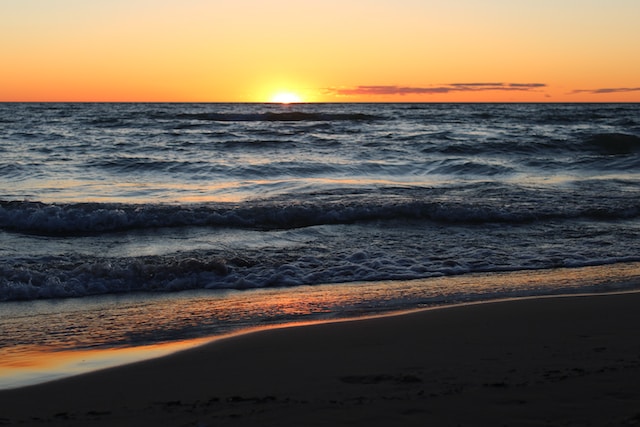
by DGR News Service | Oct 27, 2023 | ANALYSIS, Biodiversity & Habitat Destruction
Editor’s Note: The following is a testimony that Will Falk gave at Truth, Reckoning and Right Relationship with the Great Lakes on October 16 at the Rock and Roll Hall of Fame on the shore of Lake Erie, Cleveland. Here, Will relates Robert J. Lifton’s concept of claims to virtue to the destruction of the natural world. No matter how many stories we build to justify our destruction, at the end, the destruction of the natural world is never going to be ethical, and is going to destroy all life on Earth – including humans.
If you wish to discuss the content, you can contact us at newsservice@deepgreenresistance.org
The Great Lakes saved my life.
By Will Falk
On April 17, 2013, while living in Milwaukee, WI and working as a public defender, I tried to kill myself in my apartment a few blocks from the shore of Lake Michigan. After I was released from the hospital – and while I was recovering, trying to understand what led me to the decision to try to take my own life – I spent every morning that spring and summer on a big red granite boulder listening to and watching Lake Michigan.
I heard her gentle freshwater waves breaking on sand. I heard the cries of sea gulls. I heard soft summer rains fall on the lake with the joyful song of water completing the long journey from the Earth’s surface to the clouds, across oceans and continents, to fall into the welcoming arms of more freshwater. I saw great blue herons stalking bluegill fish in the shallows. I watched bugs, butterflies, and songbirds crisscrossing the breeze, their flight patterns sewing stitches of color in the air. I smiled while children, celebrating their summer freedom, swam, played, and learned what it means to be human in a classroom far older than school.
Listening and watching like this pulled me from the despair that caused me to attempt suicide. Lake Michigan gave me the medicine I needed to recover. Lake Michigan truly saved my life. And, through my memories of that beautiful time, Lake Michigan continues to save my life.
Of course, the natural world also gives us life. All life depends on clean water, healthy soil, a habitable climate, and complex relationships formed by living creatures in natural communities. The Great Lakes are some of these natural communities. Because so much life depends on the Great Lakes, the needs of the Great Lakes are primary. Social morality must emerge from a humble understanding of this reality. Law is integral to any society’s morality, so law must emerge from this understanding, too.
One breezy June day in 2013, filled with gratitude because the natural world saved, gave, and continues to give me my life, I vowed to spend the rest of my life trying to save the natural world’s life. I am a lawyer. Law is one tool we have in the fight to protect the natural world. One of the first problems anyone who tries to use law to protect the natural world encounters is that our legal system is rooted in an assumption that the natural world is mere property for humans to use, exploit, and destroy. This is one of the main reasons we’re living in a time of intensifying ecological collapse – a time when humans may, in fact, be capable of destroying Earth’s life support systems.
I do not believe it is human nature to destroy the natural world. I believe it is human nature to recognize our kinship with the natural world, to recognize that the natural processes giving us life are sacred. I believe that it is human nature to insist that all of our relatives in the natural world, all of the processes giving us life, must be protected. My beliefs are supported by the reality that our ancestors lived for hundreds of thousands of years in traditional cultures that did not push the planet to the brink of total ecological collapse. All of those traditional cultures taught that nature is sacred and that we have a responsibility to protect our other-than-human kin.
So, what happened? If it is human nature to treat the natural world as sacred, why does our legal system currently objectify the natural world?
The simple truth is that people who are willing to exploit the natural world will, in the short term, always have more power than those who respect the boundaries of nature. Human cultures that are willing to take more from the land than the land freely gives eventually exhaust their land. When this happens, these cultures are confronted with a choice: either they look for new lands to take what they need or they collapse. Either they impose boundaries on themselves or they find new boundaries to break. When these exploitative cultures conquer new peoples and lands, their exploitative ideologies replace life-centered, traditional ideologies.
The history of the colonization of this continent is a crystal clear example of how this process has played out in history. Europeans exceeded the carrying capacity of their homelands and began establishing colonies around the world to funnel resources back to Europe. This process, which is ongoing, is genocidal and ecocidal. Traditional communities are massacred for defending the land. Traditional cultures are destroyed or driven underground because their teachings question whether all of this is inevitable. And, all of this is done, ultimately, to control the land and resources.
The psychologist, Robert Jay Lifton, who devoted his career to understanding the psychological justifications that made the Holocaust possible wrote in a 2014 New York Times opinion piece, “Over the course of my work, I have come to the realization that it is very difficult to endanger or kill large numbers of people except with a claim to virtue.” Lifton explained that the Nazis didn’t characterize their actions as mass murder, they were “purifying the Aryan race” and “creating more living space for Germans.” Here, Americans have made and use similar claims to virtue to justify atrocities. As Americans pushed Native peoples onto reservations and stole their land, they weren’t engaged in genocide against Native peoples, they were manifesting their destiny.
We can extend Lifton’s idea to the natural world. It is very difficult to destroy the natural world and kill large numbers of other-than-humans except with a claim to virtue. At the heart of one of the most dominant European mythologies – Judeo-Christianity – are claims to virtues like the one found in the Bible’s Book of Genesis where people were taught that they “have dominion over the fish of the sea and over the birds of the heavens and over the livestock and over all the earth and over every creeping thing that creeps on earth.” Armed with that justification, and the technologies made possible by that justification, Europeans have come to dominate this land and her indigenous peoples.
Western legal systems, heavily influenced by Christianity, provide more of these claims to virtue. Humans are not destroying whole natural communities with mines, pipelines, crops, and clearcuts, they are simply exercising their property rights. Corporations that pump toxins into lakes and rivers are not polluting, they are complying with democratically-enacted regulations. Conversely, humans trying to pass rights of nature laws are not protecting their kin, they are depriving corporations of due process and equal protection.
I hate to reduce the Great Lakes – beings so ancient and so powerful – to an argument based in human self-interest. Regardless, know this: Human bodies are mostly water. If you’re one of the estimated 35 million people in the United States and Canada who depend on Great Lakes watersheds and you’re hydrated right now, the Great Lakes are literally part of you. If carcinogens continue to be pumped into the Great Lakes, if climate change burns more of the Great Lakes away and causes algal blooms to become worse and more frequent, if oceangoing, industrial vessels continue to drag species that push native species to the brink of extinction into the Great Lakes, you will be harmed. No claim to virtue can protect you from that. This is, unfortunately, ecological reality.
If we’re truly going to stop the destruction and return human cultures to right relationship with the natural world, we must change our legal system from one that objectifies nature to one that recognizes that the needs of the natural world are primary, that the health of the Great Lakes is more important than the health of the economy, and that in killing our relatives in the natural world, we are killing ourselves.
We must insist that our legal system becomes biophilic or biocentric as opposed to anthropocentric. Biophilia means the love of life – of all life. Law must protect sea gulls and summer rain; blue herons and bluegill; bugs, butterflies, and songbirds; rivers, forests, grasslands, the Great Lakes, and all the human children who depend on them.
Anything less is simply suicidal.
Will Falk is an attorney, writer, poet, activist, and organizer with Protect Thacker Pass. Protect Thacker Pass is an “independent, grassroots collective of people” protecting the land and all life from a proposed lithium mine in the Central Basin, Nevada. For Thacker Pass Facebook click here.
Photo by Emily Studer on Unsplash
DGR conducted its annual fundraiser on Ecology of Spirit. If you have missed it, you can view it here. You can also visit our auction for paintings, books, brownies and conversations. The auction will remain open till October 31.
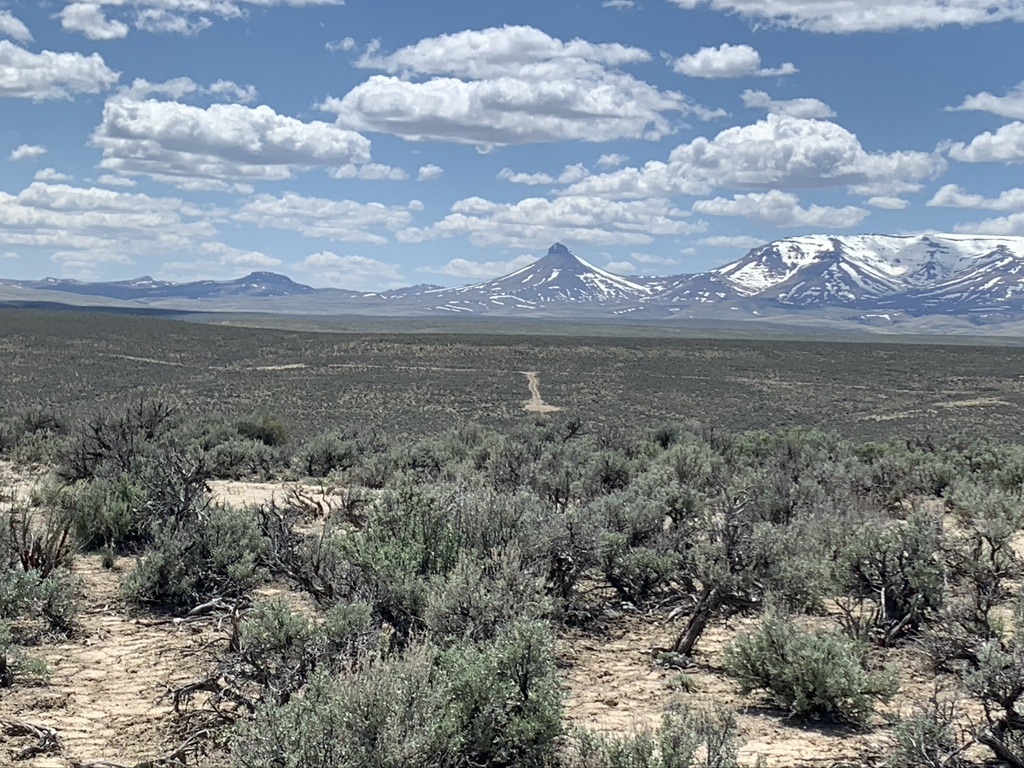
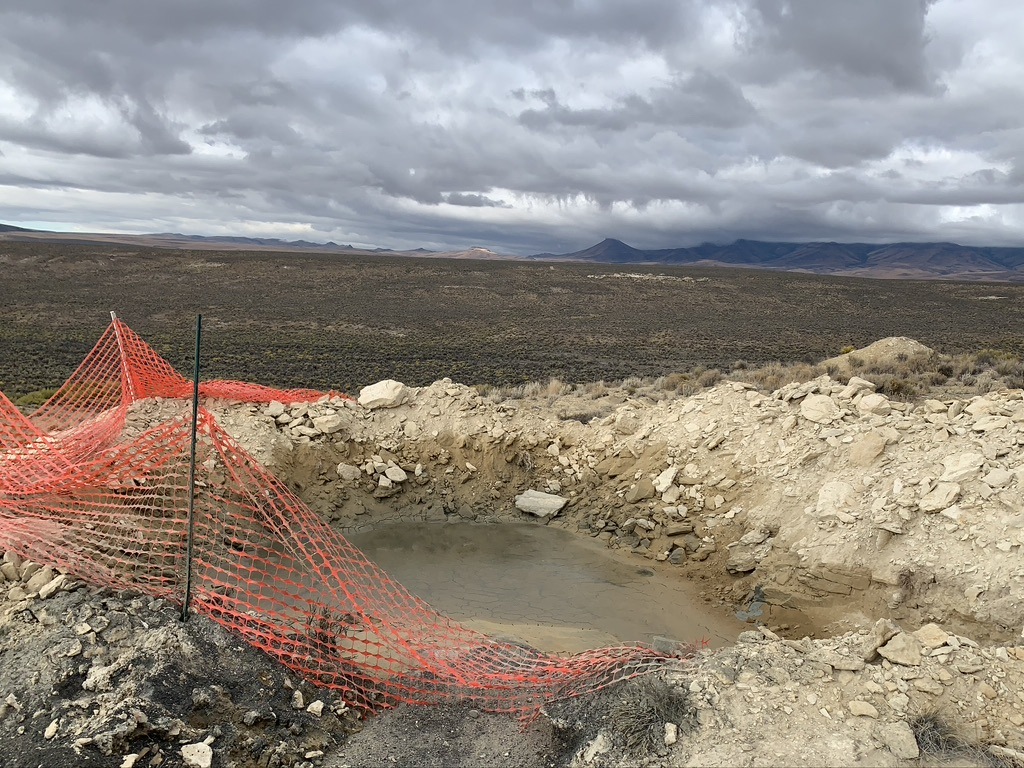
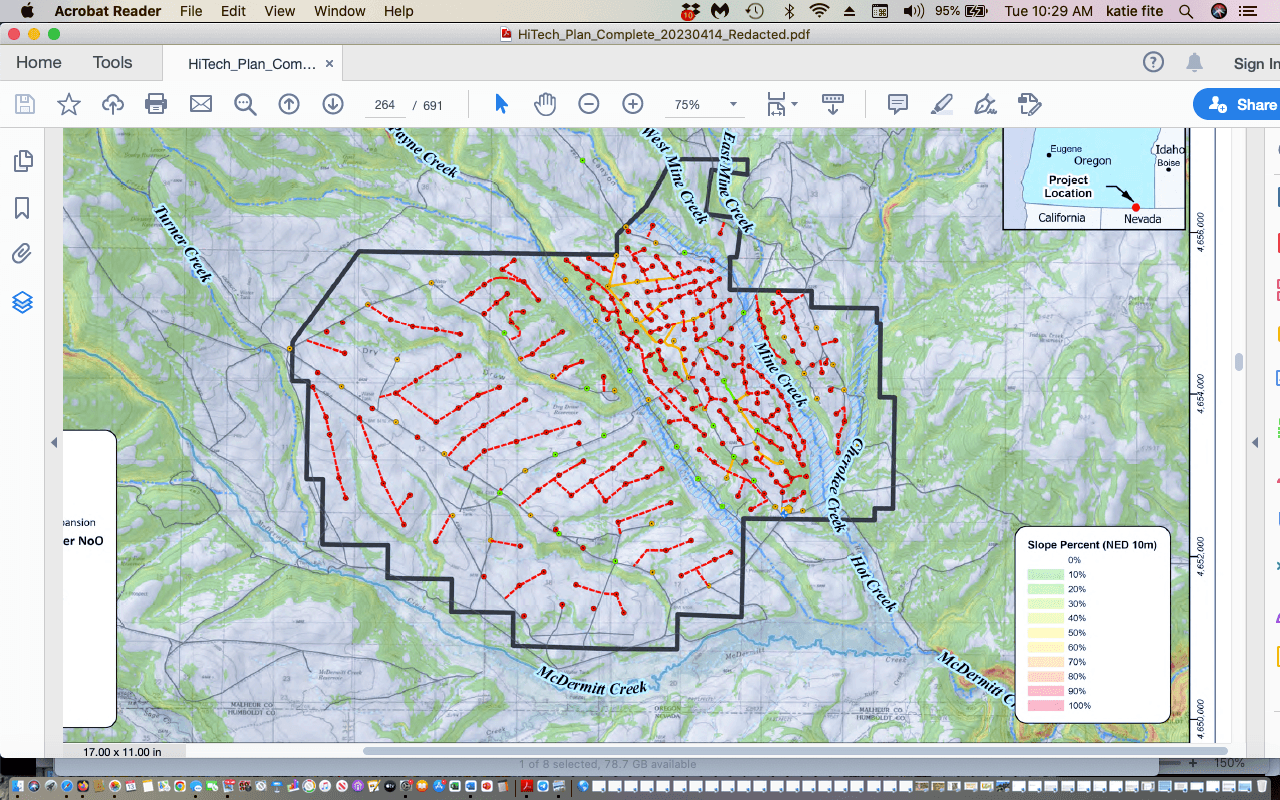 This is a map of the ghastly 2023 Jindalee exploration plan to punch in 267 new drill hole and sump sites and construct 30 miles of new roads. It would fragment an area with a very high density of nesting sagebrush songbirds of all kinds. Birds like Sagebrush Sparrow require continuous blocks of dense mature or old growth big sagebrush. Jindalee boasts its consultant environmental and cultural studies have found “no show-stoppers” and “no red flags”. Industry gets the results it wants when it pays for mine consultant work. Federal and state agencies, after a bit of pro forma sniping, acquiesce to what the mine comes up with.
This is a map of the ghastly 2023 Jindalee exploration plan to punch in 267 new drill hole and sump sites and construct 30 miles of new roads. It would fragment an area with a very high density of nesting sagebrush songbirds of all kinds. Birds like Sagebrush Sparrow require continuous blocks of dense mature or old growth big sagebrush. Jindalee boasts its consultant environmental and cultural studies have found “no show-stoppers” and “no red flags”. Industry gets the results it wants when it pays for mine consultant work. Federal and state agencies, after a bit of pro forma sniping, acquiesce to what the mine comes up with.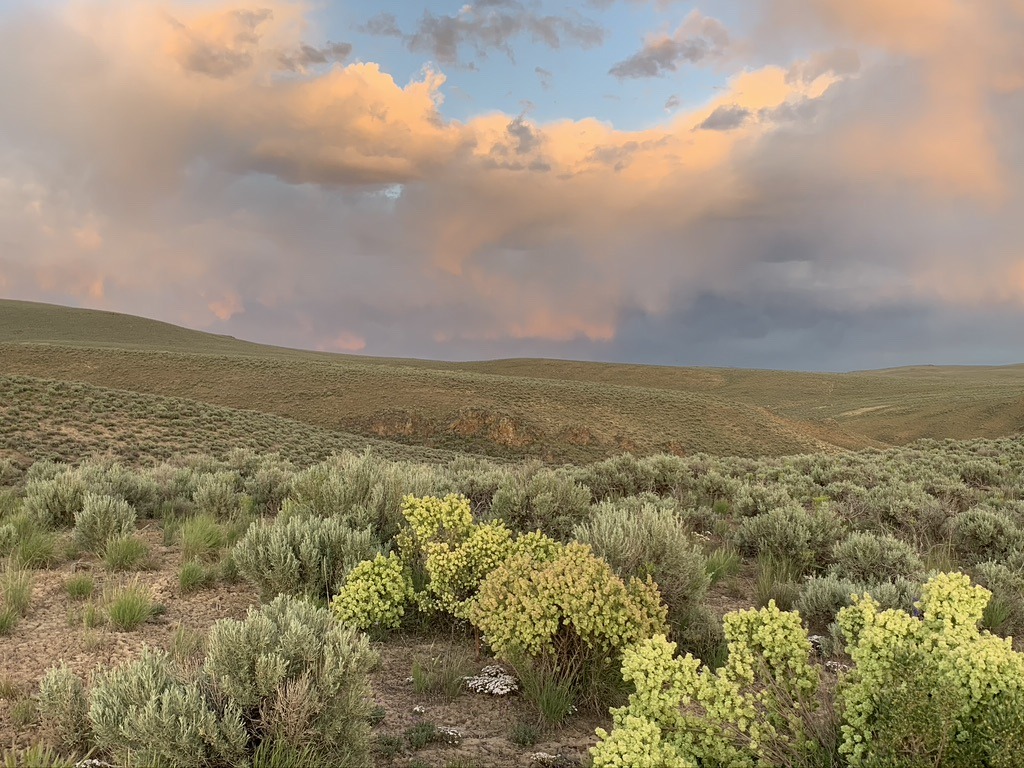

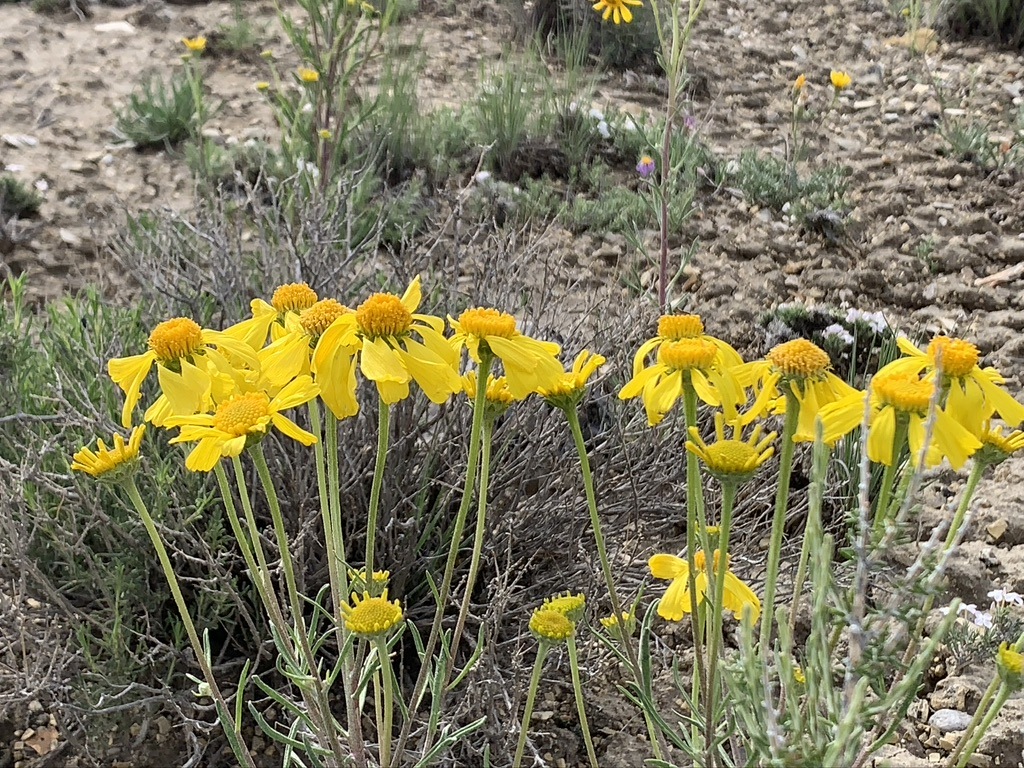


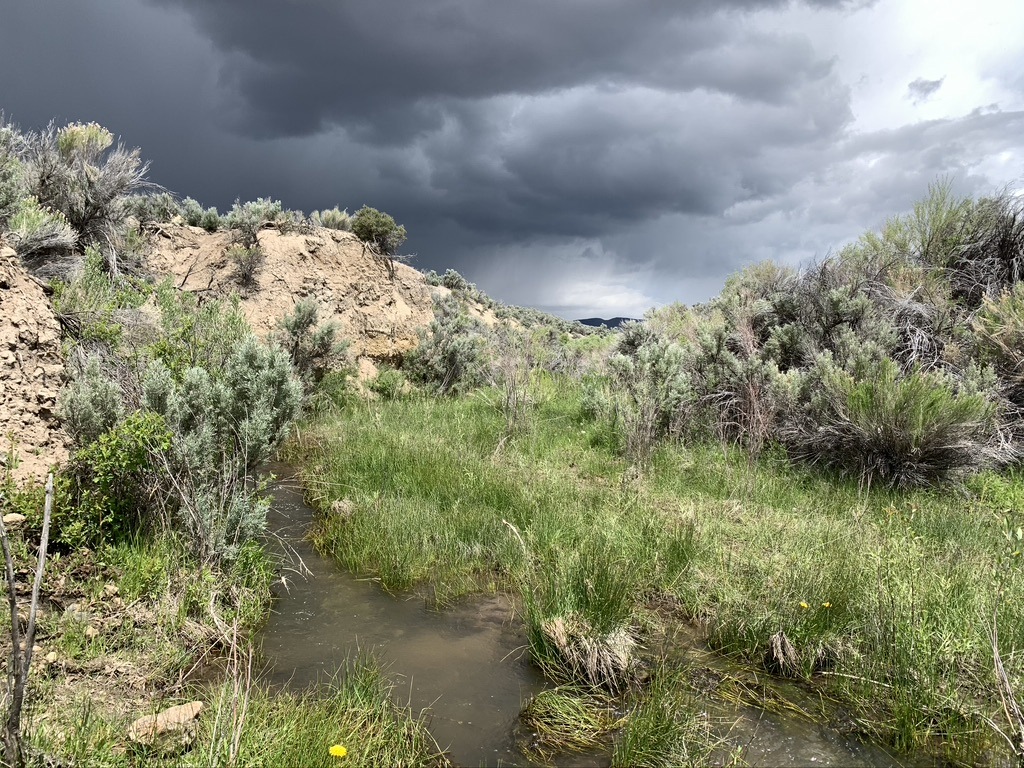




 I stopped, got out and approached a security guard who appeared at the truck. He refused to let me pass. After several minutes of my insistent repetition that this was a public road, the BLM mine EIS said this road would always be open, and that blocking use of this road indicated the EIS, the BLM and Lithium Americas had lied, the security guard relented and said he would call the head of security.
I stopped, got out and approached a security guard who appeared at the truck. He refused to let me pass. After several minutes of my insistent repetition that this was a public road, the BLM mine EIS said this road would always be open, and that blocking use of this road indicated the EIS, the BLM and Lithium Americas had lied, the security guard relented and said he would call the head of security.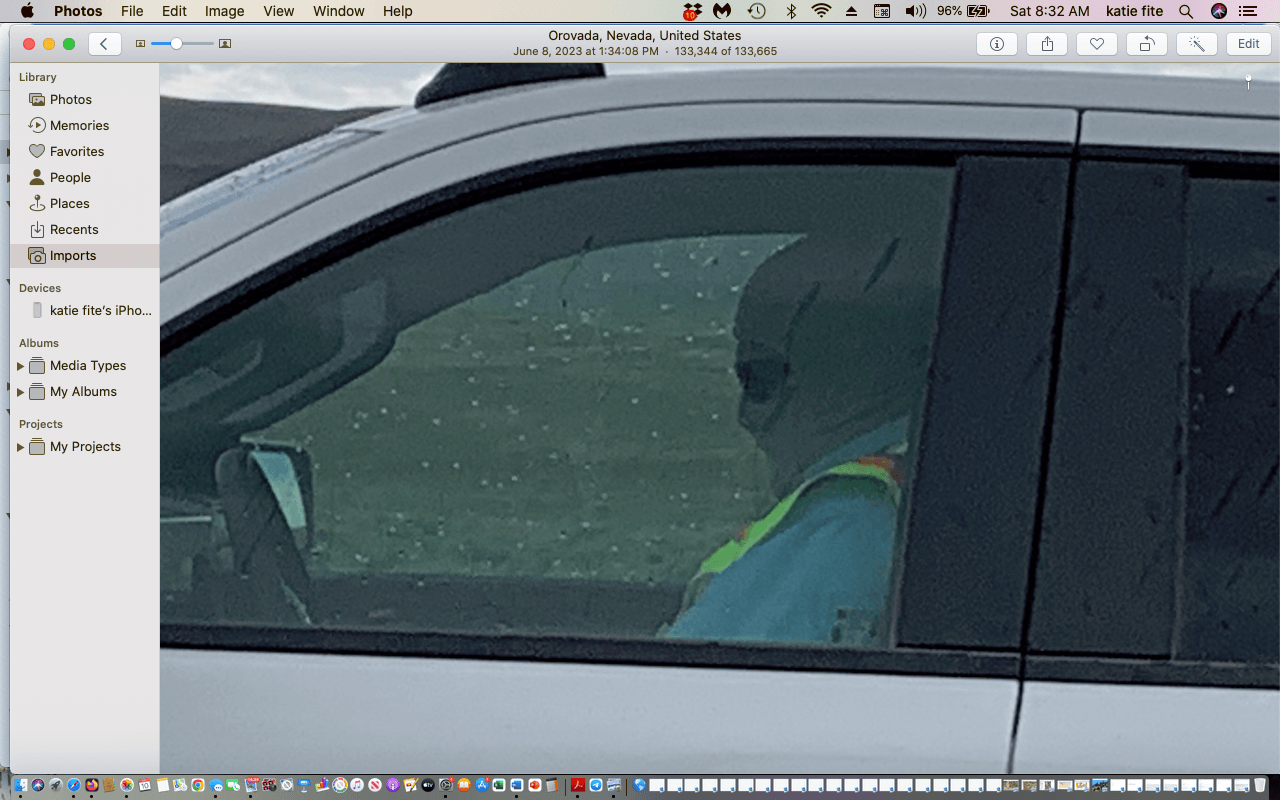 The boss pulled up in a white truck as a sudden rain whirlwind bore down. His face was obscured, and identity concealed by a tan balaclava-like hood and dark sunglasses. When he first arrived, he got out of his truck and pointed a camera device at me. I thought WTF is this – a security firm mercenary decked out for Operation Iraqi Freedom? Abu Ghraib in Orovada? I again repeated repeatedly that this was a public access road, and I was going up into the Montana Mountains to camp. He retreated to his pickup, likely to run me and my license plates through some creepy database. Finally, I was allowed to pass through.
The boss pulled up in a white truck as a sudden rain whirlwind bore down. His face was obscured, and identity concealed by a tan balaclava-like hood and dark sunglasses. When he first arrived, he got out of his truck and pointed a camera device at me. I thought WTF is this – a security firm mercenary decked out for Operation Iraqi Freedom? Abu Ghraib in Orovada? I again repeated repeatedly that this was a public access road, and I was going up into the Montana Mountains to camp. He retreated to his pickup, likely to run me and my license plates through some creepy database. Finally, I was allowed to pass through.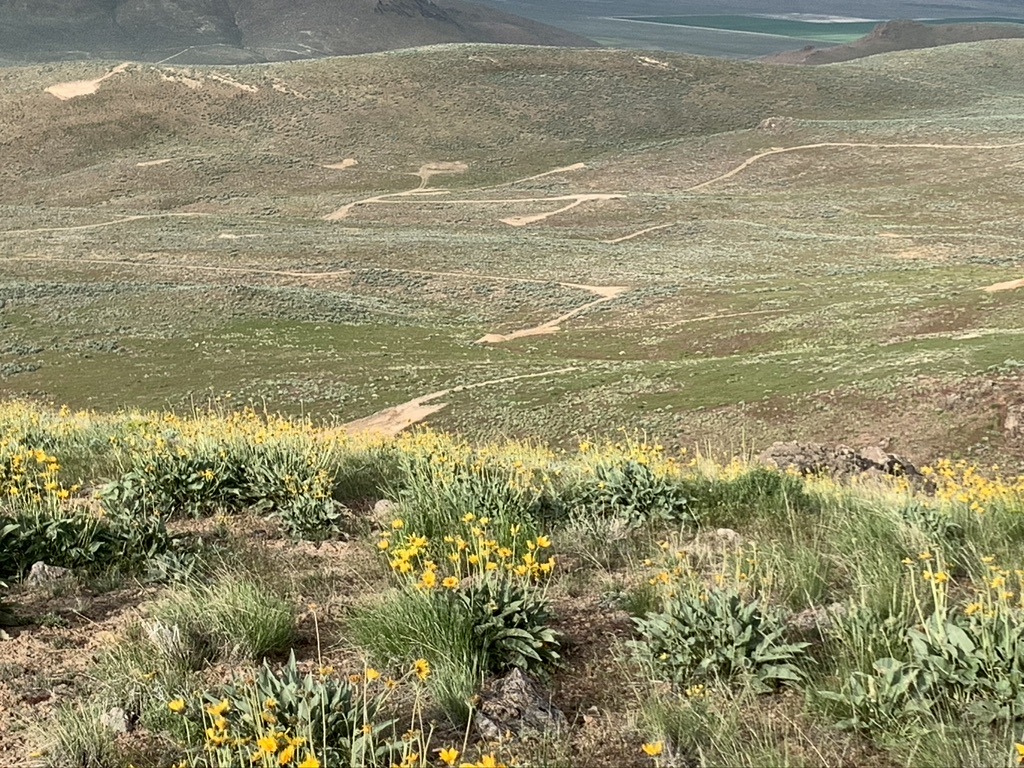
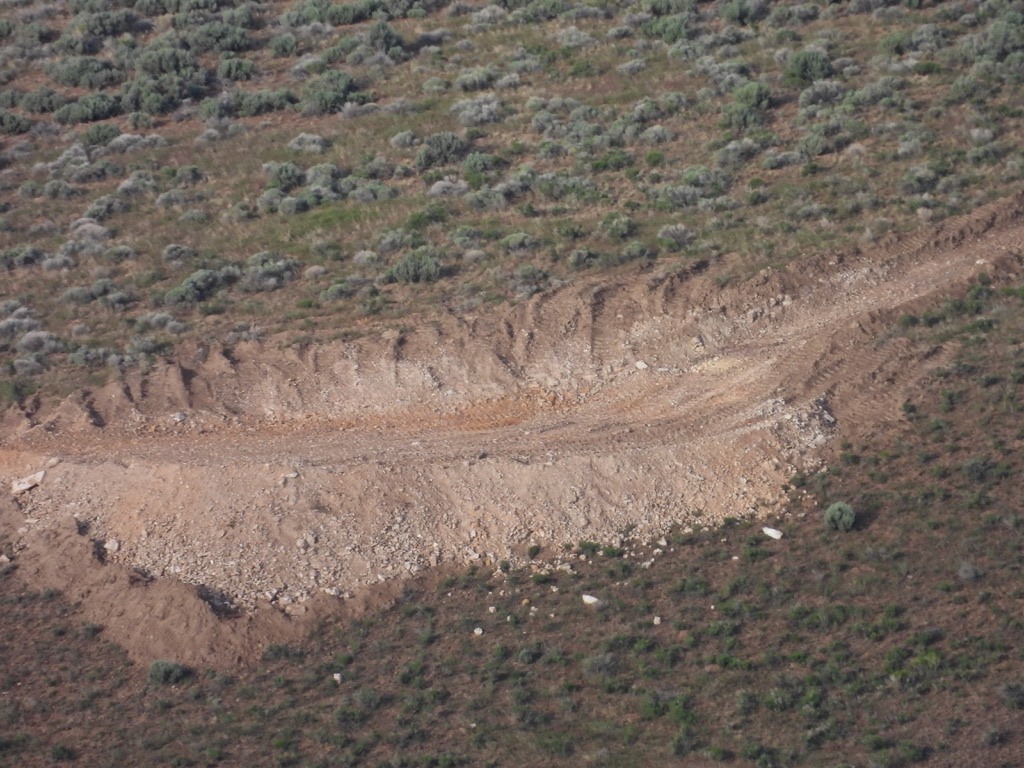
 LNC’s drill scarring is a mere prelude to the destruction that’s planned – 5,694 acres of outright destruction in a 17,933 acre project zone. The enormity and scale of the planned mine is mind boggling – a deep open pit, a waste rock pile, all types of infrastructure, a lithium smelter/sulfuric acid plant on-site using huge volumes of waste sulfur shipped into a new railroad off-loading site by the Winnemucca airport. The latter was just announced a few months ago, to the dismay of nearby residents who find themselves facing living by a hazardous materials zone. Hundreds of tons of off-loaded material will be trucked to Thacker Pass and burned every day in a plant whose air scrubber design wasn’t even finalized before the Thacker decision was signed by BLM. What stink and toxic pollution will this lithium processing generate? McDermitt caldera soils contain uranium and mercury. Mine water use is estimated to be 1.7 billion gallons annually. Enormous volumes of diesel fuel will be used throughout the mine’s operation. What’s green about all this?
LNC’s drill scarring is a mere prelude to the destruction that’s planned – 5,694 acres of outright destruction in a 17,933 acre project zone. The enormity and scale of the planned mine is mind boggling – a deep open pit, a waste rock pile, all types of infrastructure, a lithium smelter/sulfuric acid plant on-site using huge volumes of waste sulfur shipped into a new railroad off-loading site by the Winnemucca airport. The latter was just announced a few months ago, to the dismay of nearby residents who find themselves facing living by a hazardous materials zone. Hundreds of tons of off-loaded material will be trucked to Thacker Pass and burned every day in a plant whose air scrubber design wasn’t even finalized before the Thacker decision was signed by BLM. What stink and toxic pollution will this lithium processing generate? McDermitt caldera soils contain uranium and mercury. Mine water use is estimated to be 1.7 billion gallons annually. Enormous volumes of diesel fuel will be used throughout the mine’s operation. What’s green about all this?
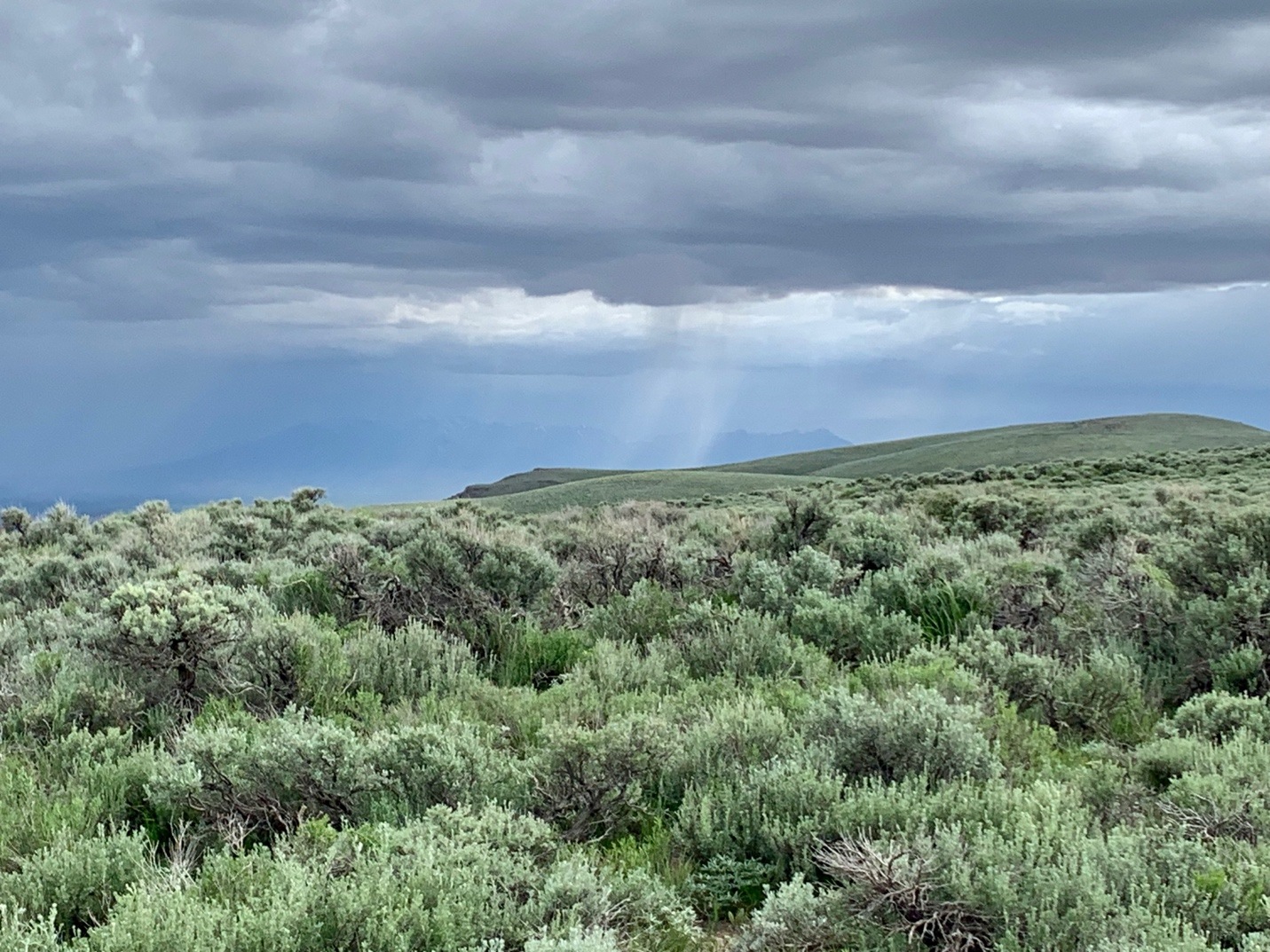
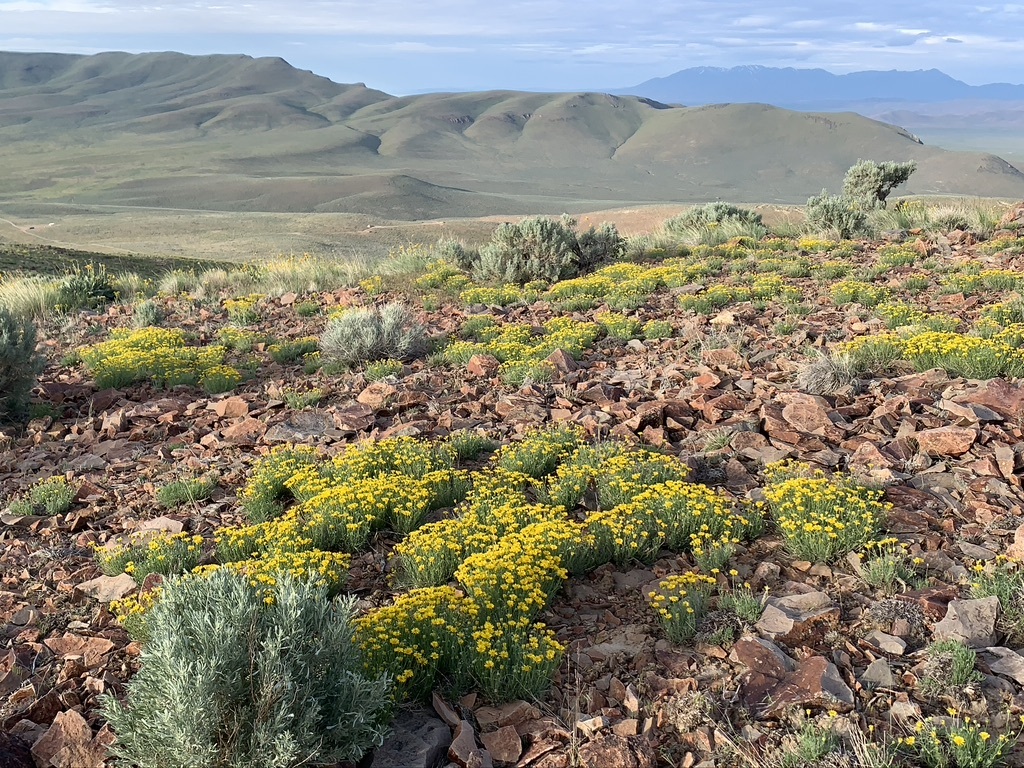
 Sacrificing the Interior West for Corporate Energy Dominance While Energy Conservation Lags or Is Forgotten Altogether
Sacrificing the Interior West for Corporate Energy Dominance While Energy Conservation Lags or Is Forgotten Altogether I’m outraged at the ecocidal stupidity with which this “energy transition” is being carried out. Will we soon see Jindalee get US tax dollars to wipe out the McDermitt Creek Sage-grouse stronghold? How ironic that would be. Interior just announced funding for major sagebrush habitat restoration using Infrastructure Bill funds in High Priority sagebrush areas. It turns out one of the sites chosen is the Montana Mountains area. Mapping shows it includes the Thacker Pass mine area too, where nearly all the sage is on the verge of being destroyed by LNC. Close review of maps for Interior’s Montana “restoration” project shows it encompasses the McDermitt Creek watershed, hence the entire area coveted by Jindalee for massive new drilling followed by open pit mining. It would be absurd to greenlight Jindalee’s ghastly exploration plan in primo habitat, when the Interior Department has identified this very same landscapeto be among the highest priority for restoration – because so much sage has already been lost already. The caldera is also key for connectivity between Sheldon and Owyhee Sage-grouse populations and for biodiversity preservation.
I’m outraged at the ecocidal stupidity with which this “energy transition” is being carried out. Will we soon see Jindalee get US tax dollars to wipe out the McDermitt Creek Sage-grouse stronghold? How ironic that would be. Interior just announced funding for major sagebrush habitat restoration using Infrastructure Bill funds in High Priority sagebrush areas. It turns out one of the sites chosen is the Montana Mountains area. Mapping shows it includes the Thacker Pass mine area too, where nearly all the sage is on the verge of being destroyed by LNC. Close review of maps for Interior’s Montana “restoration” project shows it encompasses the McDermitt Creek watershed, hence the entire area coveted by Jindalee for massive new drilling followed by open pit mining. It would be absurd to greenlight Jindalee’s ghastly exploration plan in primo habitat, when the Interior Department has identified this very same landscapeto be among the highest priority for restoration – because so much sage has already been lost already. The caldera is also key for connectivity between Sheldon and Owyhee Sage-grouse populations and for biodiversity preservation.